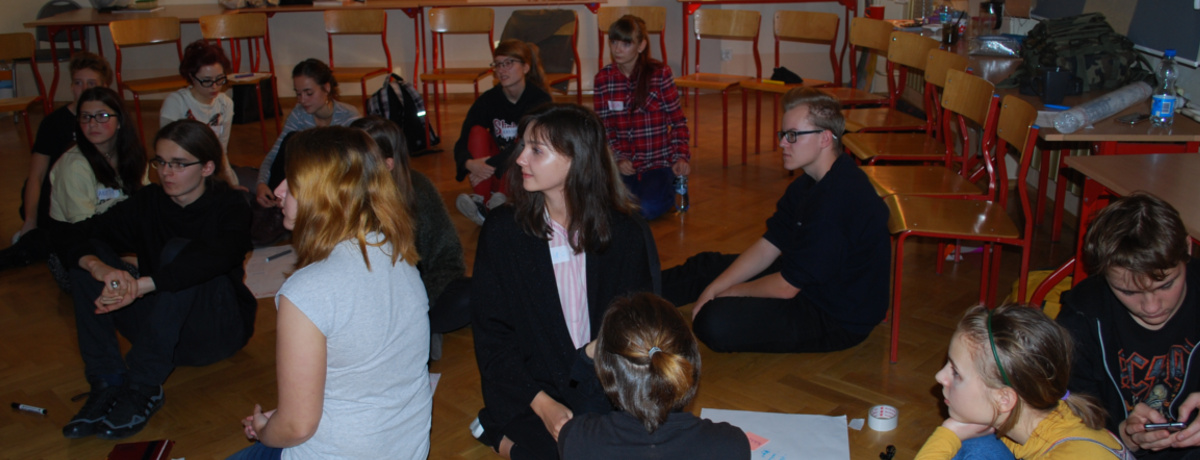| 2018 |
Bielsko-Biała
Art School Complex in Bielsko-Biała


| 2018 |
Bielsko-Biała is an extraordinary multicultural city located at the foot of Beskidy mountains. The hyphen in the town’s name is crucial for understanding its history, or rather histories: that of Bielsko which dates as far back as the 11th century and is culturally bound to Cieszyn Silesia; and Biała, a small town established in the 17th century on the edges of Lesser Poland and Galicia regions. Jews settling in Bielsko from the 17th century onwards arrived from other towns in Silesia and from Moravia. A “qahal” was established in Bielsk in 1865 and quickly became the most progressive in the region, with closest ties to German culture among all others in Cieszyn Silesia. Bielsk’s largest synagogue was constructed in 1881 based on the design of a Jewish architect and one of the city’s most prominent inhabitants Karol Korn. Many of the buildings Korn had designed still stand. In 1921, Jews accounted for 19% of Bielsk’s population.
Most of them were entrepreneurs or professionals. Biala, on the other hand, was inhabited by Orthodox Jews. In the course of World War II, in German-occupied Poland, all large synagogues in Bielsko and Biała were burnt down. A ghetto was created in 1941, only to be liquidated in 1942, when all residents were deported to Auschwitz. Bielsko-Biała is currently home to a local Jewish Community as well as Jewish Socio-Cultural Association TSKŻ. The Jewish cemetery at ul.Cieszyńska 92 with its historic pre-burial house still operates.
Bielsko-Biała’s Art School Complex has been actively contributing to commemorating Bielsk’s Jewish heritage. Through Forum of Dialogue, high school students had the opportunity to combine their love of art with an interest in Jewish culture.

The walking tour created as part of School of Dialogue workshops was entitled “What is the President hiding?” and referenced the name of the historic President Hotel, designed by Karol Korn. The tour took the form of an educational game that acquainted participants with Jewish tradition and culture. However, knowledge of notable members from Bielsk’s Jewish community that contributed to the city’s development was necessary to complete all tasks. The high school makes the game available to other local school groups wishing to complete it.
Another result of workshops conducted by Forum for Dialogue’s expert educators was an art exhibition entitled “An Interrupted Walk through the City. Paintings and Drawings Inspired by Buildings by Karol Korn’s Construction Company”.
The exhibition presents important and renowned buildings that account for Bielsko-Biała’s specific character. A description of each depicted building including its location accompanies all presented artworks. Student-created art is exhibited in the school’s Akcent gallery which is open to the general public.
The school was supported in implementing the School of Dialogue project by well-known local historian Jacek Proszyk, Ph.D as well as the local Jewish community.
Bielsko-Biała’s Art School Complex received an award for „innovativeness” during the School of Dialogue gala in 2018.

School: Art School Complex in Bielsko-Biała
Honorable mention: Winner at 2018 School of Dialogue Gala in the “Innovation” category
Students: 2nd year students at High School No. 2
Educators: Paweł Bysko, Agnieszka Zawiślak
Project cofinanced thanks to the generosity of Friends of the Forum, Conference on Jewish Material Claims Against Germany and individual donors and institutions from Poland and abroad supporting Forum for Dialogue.
In appreciation to the Conference on Jewish Material Claims Against Germany (Claims Conference) for supporting the School of Dialogue educational program. Through recovering the assets of the victims of the Holocaust, the Claims Conference enables organizations around the world to provide education about the Shoah and to preserve the memory of those who perished.